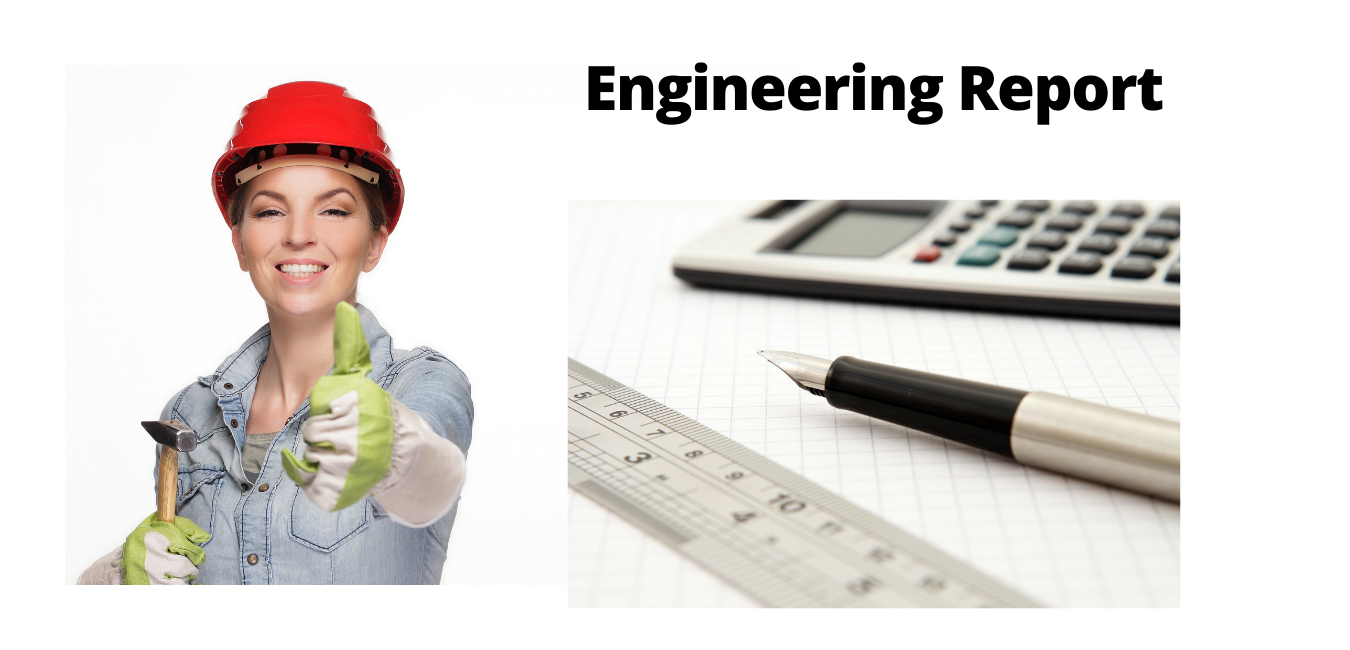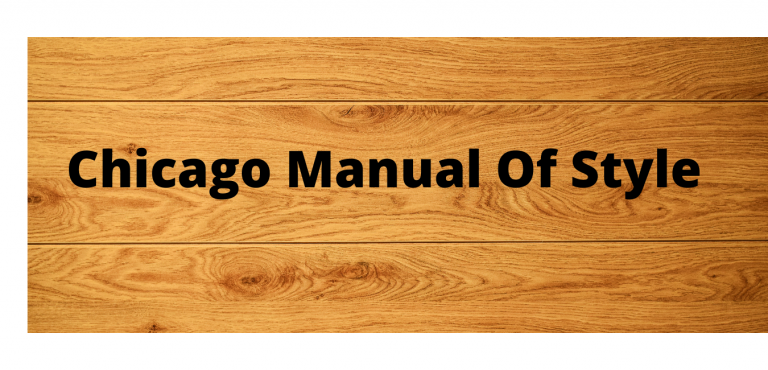Engineering Report -Format and Examples
An engineering report is an important document that contains all the relevant information about a design, construction, or installation. They are used to assess and verify the work done by engineers.
Engineering reports usually contain schematics, drawings, and other visual presentations of the project in question. They also provide specific details on how each component was designed, constructed, or installed. The report should be written in a formal style that includes tables and figures for better clarity.
Let us learn more below!
The Purpose of an Engineering Report.
Reports have various purposes. They are used in the design of future projects, for examining past work, or simply making summaries about already existing installations.
The information provided by the engineering report helps to identify the mistakes engineers make when constructing something. Reports also help to make comparisons with other projects and their results.
What Should an Engineering Report Contain?
The report should have a clear and descriptive title.
The summary section of the engineering report must provide all important details about the work done, such as timeframes and testing procedures.
An engineer should also incorporate diagrams, charts, drawings, etc., to make calculations and readings more understandable.
All reports should be written in such a way that they help identify any possible problems with the work done and provide insight on how to improve future projects.
Format of an Engineering Report


The structure of the engineering report is usually divided into the following parts.
- Title page
- Executive Summary
- Table of contents
- Introduction
- Body
- Conclusions and recommendations
- References and appendices
Title Page
The title page contains the title of the report, which should be descriptive and accurate. It should also contain information on who prepared the document, when it was written, and where it was finalized.
Example of a title page: Engineering report
Title: Design and construction of the Zagreb bridge
Author: Verica Stankovic, Milos Knezevic
Date: 29.06.2014
Executive summary
The executive summary of an engineering report is the report’s summary, giving the reader a brief overview of its findings and recommendations.
It is usually one or two pages, single-spaced.
The first paragraph of the executive summary should include a short statement about the purpose of the report and its scope—how it was conducted and what data were analyzed. A brief statement on the context of the problem being studied should also be included, with specific objectives and a statement of the problem and approach taken.
The remainder of the executive summary should focus on presenting and discussing solutions and recommendations and accurately depicting project or task outcomes.
However, remember it is a summary, not a complete report. It should be able to stand alone and explain your study, its findings, and any recommendations you may have in summary. Do not include too much information that is not in the body of the report.
Example of an executive summary of an engineering report:
“This report presents the design and construction of the Zagreb bridge. The work done includes all relevant data regarding timeframes, testing procedures, calculations, etc., as well as the final product. We conducted our research by working on calculation sheets, examining diagrams, charts, drawings, etc., talking with people who worked on the bridge, and visiting it several times.
The report also shows a brief history of the bridge’s construction and a short description of materials that were used, as well as recommendations on how to improve future projects.”
Table of contents.
The table of contents helps you find the information that you are looking for. List all the headings and subheadings in your report. Each heading should be the main topic.
A table of contents can also help you create a structure for your engineering report. It will help organize the information logically, which is most likely going to be chronological or hierarchical.
Example of a table of contents:
Table of contents
1. Title pages……………………………………….1
2. Executive summary………………………….3
3. Table of contents……………………………..4
4. Introduction………………………………………5
5. Body…………………………………………………6
6. Conclusion and recommendations…….15
7. References and appendices………………16
Introduction
The introduction section should briefly state the job being done, which in this case is a bridge (From the example above). It should state what and why and give the study context, such as location and construction date.
The introduction section should include a statement on the problem being addressed in this report.
Include your hypothesis or research question, if you have one, along with your methodology for testing the hypothesis or solving the problem. Usually, this information is found in the introduction.
It should also state what is to follow in this report and its purpose.
Example of an introduction:
“Zagreb Bridge is one of the most significant bridges in Croatia, and it spans over the Sava River. It was completed on 4 September 1979, and it has been serving as the main connection to the surrounding areas, such as Belgrade and Slovenia.
This report describes how we managed to design and construct a replica of the Zagreb Bridge. We will focus on presenting information regarding timeframes, materials used, calculations, etc., as well as the construction process.”
Body
This section is all about what you are doing. It is the most important part of the report.
This section tells people your problem, then your solution to that problem, and then it tells them how well your solution worked.
This section has a whole bunch of numbers in it for math stuff. It also has diagrams and charts with more numbers on them.
This section includes three main parts:
1. Introduction to calculations and diagrams;
2. The results of your tests and what they say; and 3. Summary and conclusion (and recommendations).
Body of engineering report example:
Our approach for this project was to study all the available information and collect some additional information from people involved with the original bridge. We also visited Zagreb Bridge a few times and made a lot of measurements on-site.
To design our model, we needed an accurate depiction of the original bridge. Therefore, we have studied drawings, photos, and videos of the Zagreb Bridge.
Based on the information presented above, we have decided to build our model on the 1:200 scale. We will place the replica next to the original bridge for a more precise representation.
In conclusion, we have designed our model and tested it by doing some load testing on a small scale. We found that our model can withstand approximately 20 tons of weight, which is about how much the original Zagreb Bridge can handle. We also suggest using stronger materials to build our model, in order to make it more durable.
(The length and details that go into the body of your report will vary with the project itself. It might be shorter or longer)
Conclusions and Recommendations.
This section is a summary of what you did and what you recommend for future projects.
This section might include a general statement about what can be learned from your project and any recommendations that could be made to improve upon it.
References and Appendices
This section includes a list of references used in the report and additional information that was not needed to be directly included in the body of the report. Appendices allow including large or multiple pieces of information that you have gathered for your report but that do not necessarily fit in the body
Mistakes to Avoid While Writing a Report:


- Relying on information not given by the instructor. Every project is different, and you will probably be asked to do things in a certain order or even follow a particular structure, so pay attention.
- Excessive use of jargon, abbreviations, and acronyms.
- Making things up or pretending to know something when you don’t.
- Using unclear language (stuff that people can’t understand).
- Not paying attention to grammar and punctuation.
Tips for Writing a Good Engineering Report
- Include photos, drawings, and diagrams where possible.
- Make sure to include all the information you were asked to have and a few more facts for good measure.
- Be clear and concise with your wording.
- Be in-depth with your work, and don’t be afraid to include a lot of relevant information in your report.
- Double-check the spelling, grammar, and punctuation in your report before turning it in.
- At the end of the writing process, remember to edit and proofread your report.
Need Help with an Engineering Report?
Figure 4 Need help with an engineering report
Writing engineering reports might be challenging for most engineering students. Hiring an expert can help you with this. You might need an engineering report writer like the one at tutorsploit.com.
Our writers are all engineering graduates and understand the basics of this type of report. Using our services is fast and straightforward, so you can focus on getting other things done.
We ensure that you get an original, high-quality report that is 100% free of plagiarism. Our experts are well versed in various report formats, and they know how to create any type of engineering report.
Is it Safe to Hire Your Engineering Report Writing Services?
Our experts are all graduates from reputable universities. They have a sound knowledge of various engineering disciplines and can produce work that is on par with any university standard. We understand your requirements and use our expertise to meet those requirements within the given deadline. This ensures that you get quality work that is free from errors.
Your data is safe with us. We understand the importance of confidentiality, and our experts are well aware of how to handle data. You can trust them with any information you give us for your project.
What Types of Engineering Report Writing Services do we Offer?
We have a team of expert writers for all disciplines. These include civil engineering, mechanical engineering, electrical engineering, etc. We can help you write any type of engineering report, including thesis, dissertations, design/prototype reports, meeting minutes, etc.
What is the Turnaround Time for Engineering Report Delivery?
Our experts are well aware of how much effort goes into generating an engineering report. We understand that you may need it quickly, and we ensure your work is delivered within the specific time you give us.
Summary
Writing technical reports is an important part of different engineering careers, whether in the field itself or as class assignments.
A good report will include all necessary information pertinent to the project topic and give the reader a good idea of what you did and how you did it.
When writing reports, stay organized and follow all of the assignment guidelines to a tee.
Above all else, make sure your report is accurate and truthful.
Technical report writing can be tricky, but with practice comes perfection.


I‘m a freelance content and SEO writer with a passion for finding the perfect combination of words to capture attention and express a message. I create catchy, SEO-friendly content for websites, blogs, articles, and social media. My experience spans many industries, including health and wellness, technology, education, business, and lifestyle. My clients appreciate my ability to craft compelling stories that engage their target audience, but also help to improve their website’s search engine rankings. I’m also an avid learner and stay up to date on the latest SEO trends. I enjoy exploring new places and reading up on the latest marketing and SEO strategies in my free time.






